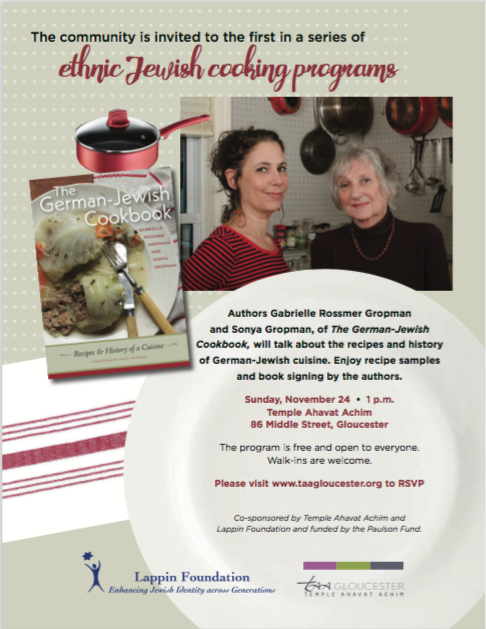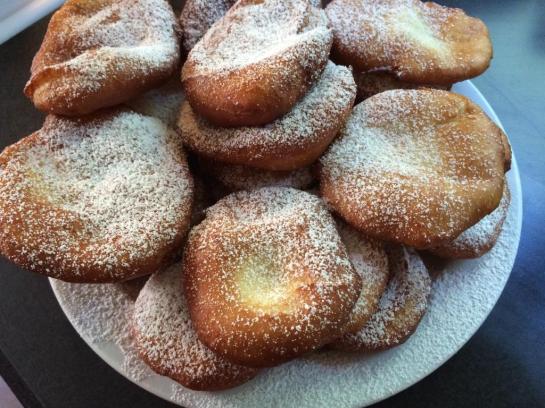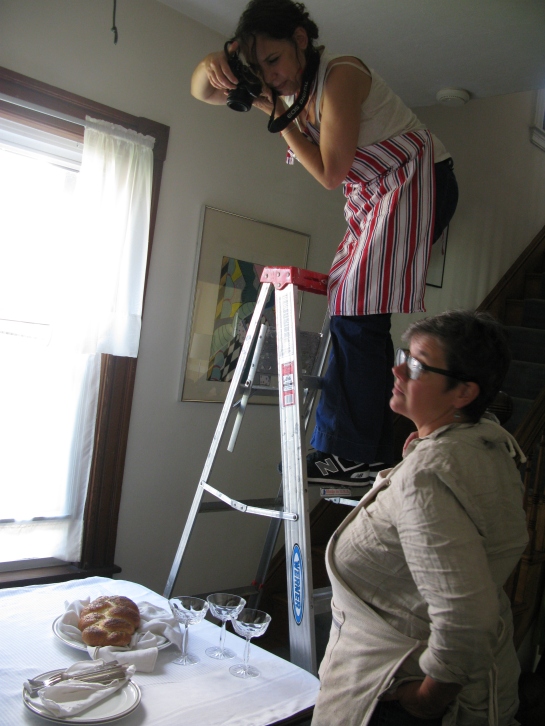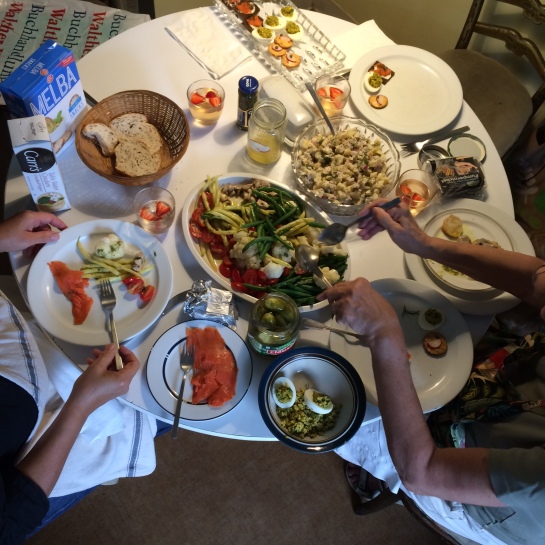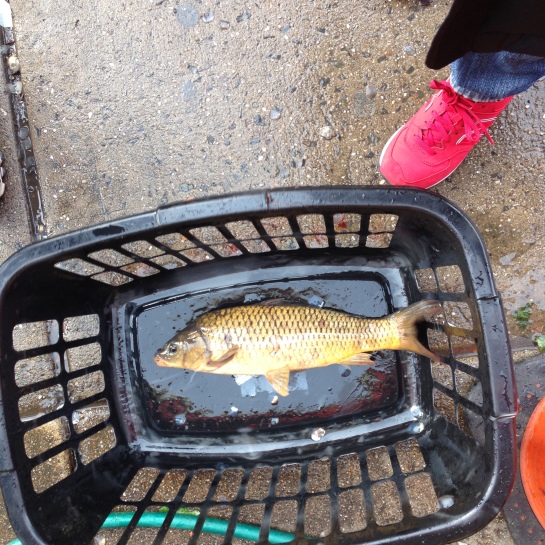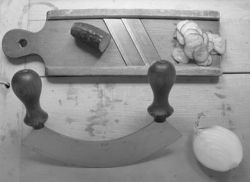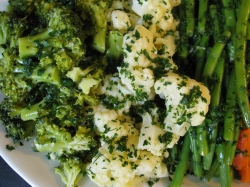My image of Bamberg began before I ever went there — starting with the black-and-white photo of the rivers and bridges and medieval buildings hanging in our New York City apartment during my childhood, and continuing with my father’s tales of the glories of his native city (and my birthplace) – all memories wrapped in lushness.

[reproduction of medieval map of Bamberg]
Close to the old medieval center of town is the Hain, a neighborhood of late 19th century mansions of light-colored stone, square and stolid. I saw it for the first time in 1973, when my father guided us to the places he had always talked about. He showed us the building on Hainstrasse where the Jewish social club (Ressource) had been located. In 1973, it was an insurance building. We actually went to the door to see if there was any indication of its previous incarnation. Nothing. Many of the builders and original owners of these homes were Jewish; they were hop merchants and factory owners. The Dessauer family was one of those and number 4a Hainstrasse is the address of the Villa Dessauer, which today houses the Municipal Museum of Bamberg.
When Hitler came to power the Villa was inhabited by the Pretzfelders, Jewish descendants of the Dessauers. In 1939, while the Pretzfelders were still living there, #4a became a “Jew House” (Judenhaus). The Jews of Germany no longer had any rights as citizens. They were removed from their own homes into group quarters. My grandparents were relocated there from their own long-time residence, as well as numerous other Jewish people. They had been friends with the Pretzfelders and one can only imagine the psychic and physical impact of such a dislocation. By late 1942, all these people had been deported to their various fates in ghettos and death camps and none of them survived. After the War, the Villa became the America House, a part of the U.S. Government whose job it was to re-educate German citizens with democratic principles. After the Americans gave it up, the Villa became the Municipal Museum. 

[left and right, interior of Villa Dessauer, Bamberg, 2013]
In 1991, I had an exhibit of my artwork there, along with three other American artists. My work was titled “In Search of the Lost Object”. It was a multi-media installation in several rooms of the Museum, and it was about the fate of our Jewish Bamberg family — those of us who survived, and those who didn’t. Since my grandparents, who were deported to a camp east of Lublin in April, 1942, had resided and suffered in this building, my show was full of ghosts and my mind was filled with imagined scenarios. It was the most powerful experience of my life as an artist.


[left, Chriss Fiebig and Gaby in Bamberg, 1990; right, Chriss’ bookplate]
During a trip to Bamberg in 1990 to prepare for the exhibit, Sonya and I met Chriss Fiebig. She was a striking woman with blonde hair pulled back into a tight bun, piercing blue eyes set in an angular face and a deep laugh. Chriss was a fierce advocate of all things Jewish in Bamberg. She felt certain that her grandmother had been Jewish and she adopted Judaism as her identity. She learned Hebrew and married a religious Jewish man in Paris, where she had gone to become a model. When the marriage failed, she returned to Bamberg. Chriss was active in more ways than I can say: in restoring the Jewish cemetery; in giving tours to visiting Jews and gentiles alike; in teaching about Judaism to seminarians; in leading interfaith services, and on and on. She became my guide and mentor in Bamberg and I will always be grateful to her for her combination of warmth and shrewdness. When an expanded version of my show was at the Cathedral of St. John the Divine in New York City in 1994, we invited Chriss to join a panel that also included Reb Zalman Schacter-Shalomi and the Reverend James Morton, then Dean of the Cathedral, to talk about Jews in Germany today. For me, Chriss was a cheerleader, guide, and a dear friend.




[Gaby, with art work at Villa Dessauer, 2013. Top, “White Dove”; all others, details of “Document Wall”]
In November, 2013, the two pieces from the 1991 show that the Museum had acquired were to be exhibited again as part of a large historic exhibit called “Jüdisches in Bamberg” (Jewish Life in Bamberg). (the exhibit is up until June 1, 2014.) It was very sad that Chriss was not there for this show — she died quite suddenly in 2004. She is buried in the Jewish cemetery in Bamberg. Regina Hanemann, the Director of the museum, guided the process of this show over a period of years. She is sensitive to all aspects and she was a generous and caring guide to Sonya and me during our one-week stay in Bamberg. Among other things, Regina is aware of our interest in the food history of German-Jews. She pointed out the berches (bear-ches) bakeries in Bamberg and had fresh berches from one of those bakeries at the reception, in our honor. It was very moist and chewy, the way it used to be in New York when I was growing up.


[Berches served at opening reception of “Juedisches in Bamberg”, Villa Dessauer, Bamberg, November, 2013]
The new exhibit traces the history of Jews in that city. Included are artifacts, photographs, portraits, written material, art work and videos. Looking at the intervening 19 years, there has been a massive change. The show curated by a young historian, Timo Saalmann , reflects the amount of academic interest there is today in all things Jewish in Germany. The preservation of memories and historical information is a driving motivation. I was pleased to be able to speak at the opening to a packed audience, in bad German, about the changes I have witnessed, and about my family’s ongoing connection to Bamberg.
— Gaby


